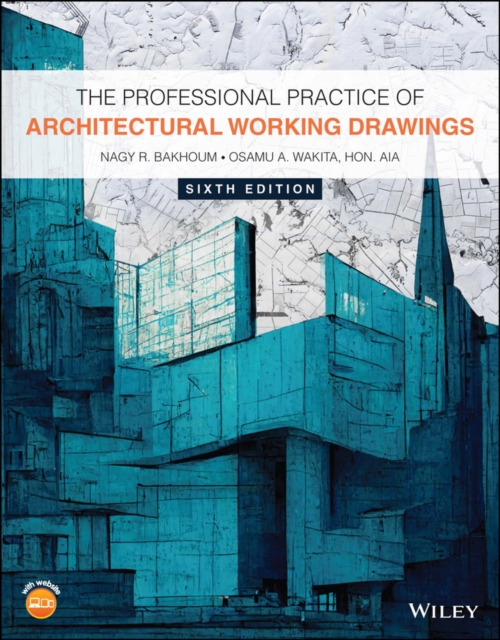
The Professional Practice of Architectural Working Drawings Paperback / softback
by Nagy R. (Obelisk Architects in Torrance, CA) Bakhoum, Osamu A. (Los Angeles Harbor College) Wakita
Paperback / softback
Description
Unique resource combining guidance on professional practice with creating working drawings that clearly communicate a design between builder and client Revised and updated with new content reflecting the urgent challenges of sustainability and working life, The Professional Practice of Architectural Working Drawings is a complete guide to the skills needed to create a set of drawings that clearly and effectively communicate a design, combining the practice of architecture with the development of working drawings—two concepts which are inherently intertwined. This Sixth Edition has been extensively edited, tightened, and rearranged, with a fresh approach matching the experience of students moving into their first professional positions. With new examples and images throughout, The Professional Practice of Architectural Working Drawings contains information on: Processes and procedures of developing working drawings, to organize and educate students in this important skillCrucial concepts that real-world techniques architects rely on every day, from site, floor, framing, and foundation plans, to building sections and elevationsStandards, customs, regulations, and symbols, alongside computer-generated drawings, 3D modeling, Building Information Modeling, and other architectural technologySustainable concepts, foundation types, building sections, schedules, and more The Professional Practice of Architectural Working Drawings is an ideal learning resource for beginner, intermediate, and advanced drafting courses, ranging from high school to community college and into the first and second years of traditional university courses.
The text may also be helpful for professionals looking to advance their skill sets.
Information
-
Available to Order - This title is available to order, with delivery expected within 2 weeks
- Format:Paperback / softback
- Pages:640 pages
- Publisher:John Wiley & Sons Inc
- Publication Date:18/01/2024
- Category:
- ISBN:9781119875338
Information
-
Available to Order - This title is available to order, with delivery expected within 2 weeks
- Format:Paperback / softback
- Pages:640 pages
- Publisher:John Wiley & Sons Inc
- Publication Date:18/01/2024
- Category:
- ISBN:9781119875338






